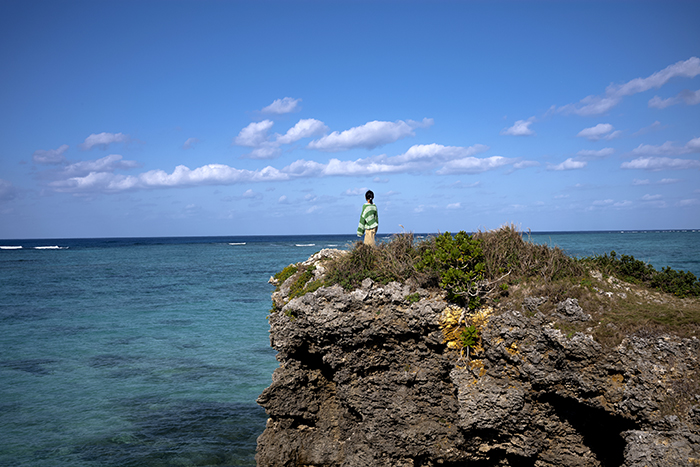2024.2.17(Sat)
Time and Colours
昨日、大阪での講演会を終えた後、講演会場からほど近い美術館を訪れた。比較的近年につくられたというその美術館ではちょうど2つの展示が行われており、1つは地元大阪の女性作家に焦点を当てたもの、もう1つは印象派を代表する画家・モネ。最後の部屋にある『睡蓮』に至る彼の軌跡がテーマだった。この展覧会で興味を持ったのは、(それは『睡蓮』の連作において)描きこまれた部分よりも、明らかに描き残したと思われる、その「余白」だった。これは大きな発見となった。それともうひとつ、ノルマンディー、ブルターニュ、地中海を移動する彼の海の風景への憧憬。長年にわたり海景を撮影してきた写真家として、彼の軌跡にあらためて共感を覚えた。彼は同じ場所を何度も訪れ、同じ海景を何度も見ることで、自然から「色彩」を受けとったのだと思う。その場所に居続けなければ見えないもの、つまり「時間」が彼に「色彩」を見せてくれたのだ。その時間を彼は執拗に追い続けた。そのことが本当の彼の創作へと転じるのは、『睡蓮』において、そしてその第一次世界大戦後における作品のように思う。視覚を失いつつある中で、その色彩は彼の内面に立ち現れる。海の記憶が、時間が、色彩が、彼自身と重なる。あの「余白」とは彼の創作であることの証、その確証ではないか。
Yesterday, after my lecture in Osaka, I visited a museum not far from the lecture venue. The museum, which was built relatively recently, was holding two exhibitions, one focusing on a local female artist from Osaka, and the other on Monet, one of the leading impressionist painters. The theme of the exhibition was his trajectory leading up to “Water Lilies” in the last room. What interested me about the exhibition was not so much the parts that were painted (that is, in the series of Waterlilies), but the ‘margins’ of the painting, which were clearly left out. This was a great discovery for me. Or another point, his admiration for seascapes as he moves between Normandy, Brittany and the Mediterranean. As a photographer who has been photographing seascapes for many years, I felt a renewed empathy with his trajectory. I believe that by visiting the same places and seeing the same seascapes over and over again, he has received ‘colours’ from nature. What he could only see if he stayed there continuously, in other words ‘time’, showed him ‘colours’.
He relentlessly pursued that time. I think it was in “Water Lilies” and in his post-World War I works that this turned into his real creation. While he is losing his sight, the colours emerge in his inner world. The memory of the sea, time and colour overlap with his own. That ‘margin’ is proof of his creation, a confirmation of it.
